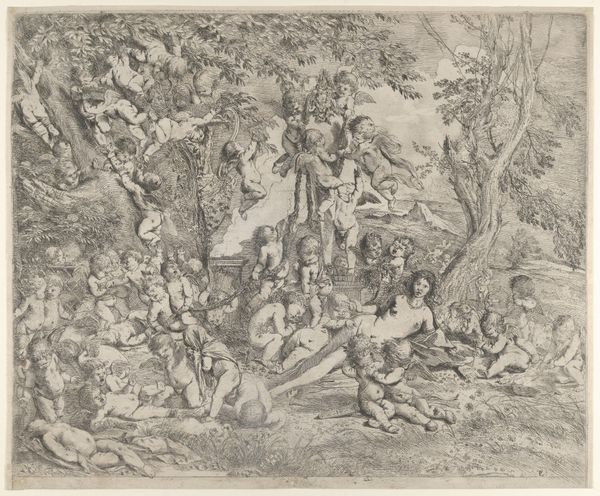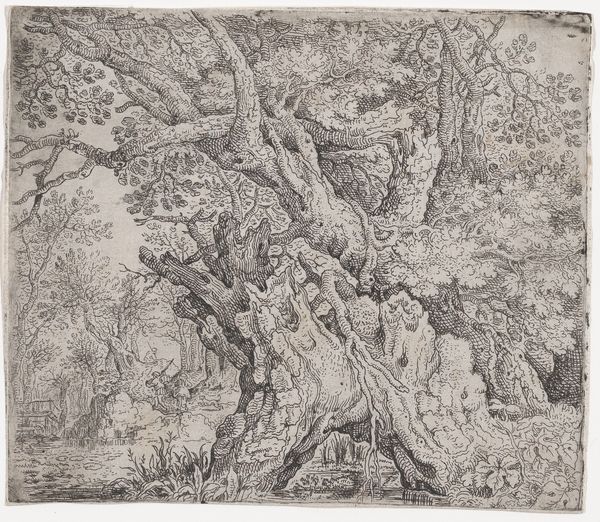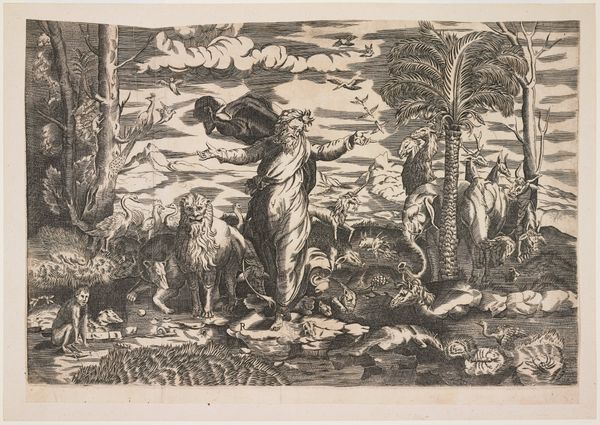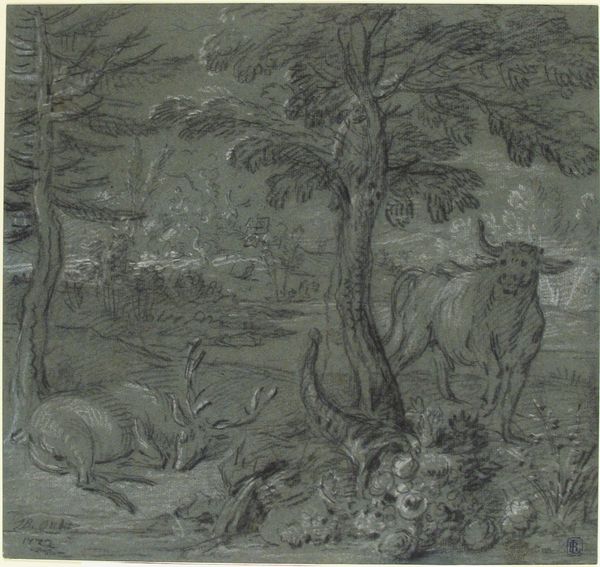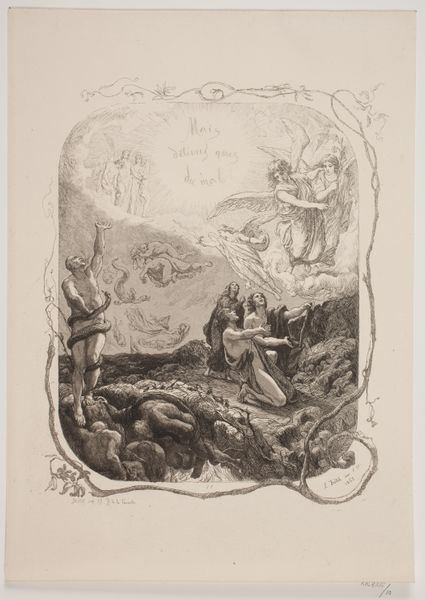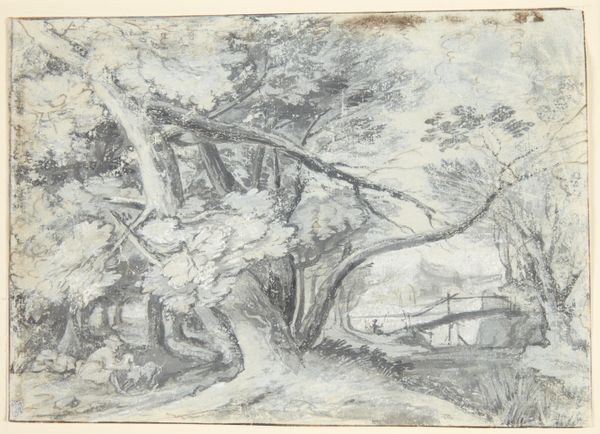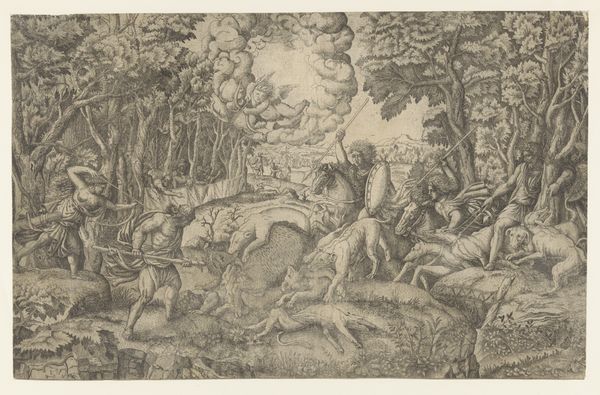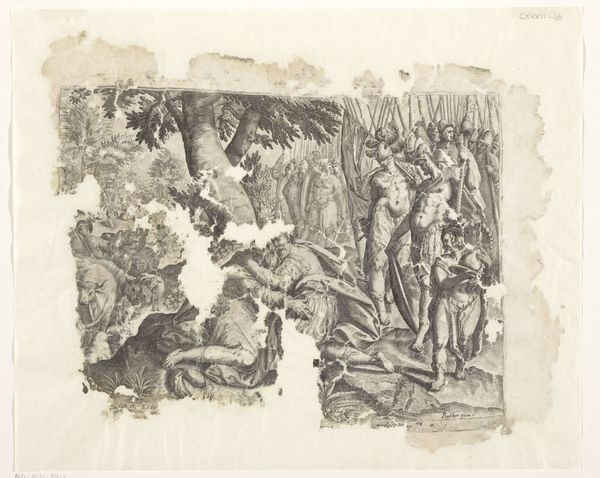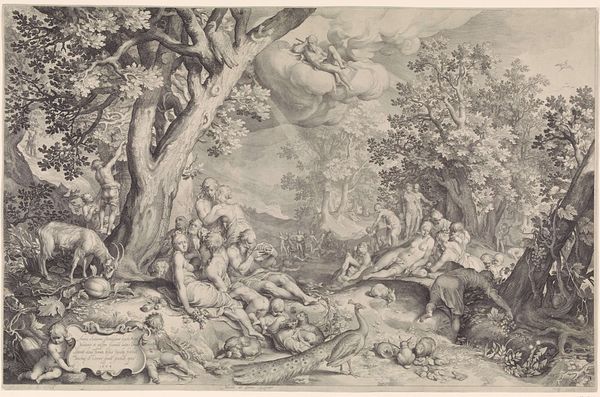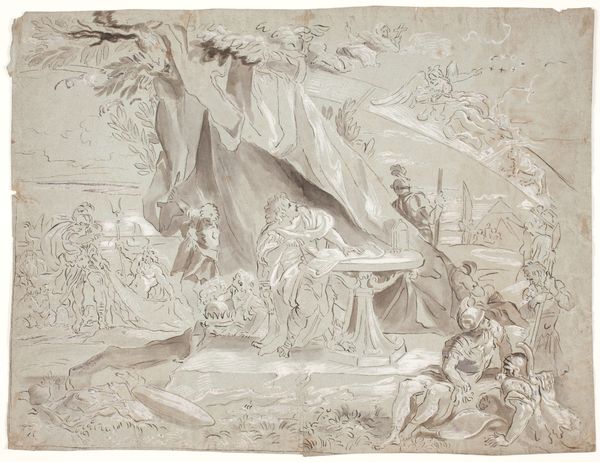
metal, relief, sculpture
#
allegory
#
metal
#
relief
#
landscape
#
mannerism
#
figuration
#
sculpture
#
history-painting
Dimensions: height 17.5 cm, width 19.0 cm, thickness 0.5 cm
Copyright: Rijks Museum: Open Domain
Curator: Looking at this silvery expanse, I immediately feel a sense of dynamism and chase. Editor: This is "Pan en Syrinx," crafted in 1603 by Paulus Willemsz. van Vianen. It is a metal relief currently held at the Rijksmuseum. The style nods towards Mannerism, and it represents a pivotal moment from Ovid’s Metamorphoses. Curator: Ah, so it depicts the transformation! The constant theme of metamorphosis reflected through chasing a nymph through a pastoral landscape – this pursuit says something about power, desire and agency, no? It makes the subject rather… complicated. Editor: Exactly. Visually, this panel operates as an allegory laden with symbols that weave into a cohesive historical narrative. Look at Pan, lounging—he embodies excess and entitlement, characteristic of a patriarchal power structure, whilst the vulnerable Syrinx becomes intertwined and part of the landscape against her will. Curator: Syrinx becoming reeds certainly makes the subtext quite literal! Given Mannerism's penchant for complex composition and stylized figures, there's a symbolic overload – every form contributes to this underlying tension. Editor: True! From a feminist perspective, one cannot ignore that Syrinx sought freedom by escaping a masculine and divine authority figure. So her metamorphosis into reeds, while maybe an act of self preservation, also reflects historical experiences where women's autonomy and freedom have been historically suppressed. Curator: Yet, in turning to iconography, it also mirrors a collective consciousness around transformation as empowerment; as becoming something new, and therefore perhaps outside the reach of her oppressor. Editor: The context in which Van Vianen was producing this work must be taken into account when analysing these allegorical undercurrents. It's not purely classical escapism. Curator: I agree. It's intriguing how it distills deep psychological and societal undercurrents. What did the patrons really feel about its symbolism? Did they view the relief as more than just decor, or even a piece of historical painting? Editor: By encouraging discussions across disciplines, a piece such as this historical depiction facilitates not just art historical debate, but sociological investigation into changing social structures. Curator: It’s certainly more than a beautiful silvery tableau, it’s a cultural and societal statement immortalized in metal.
Comments
No comments
Be the first to comment and join the conversation on the ultimate creative platform.
